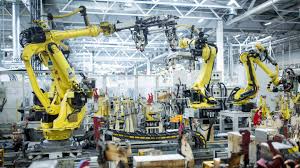Behind the Scenes: The Intricacies of Theatre Production

The Art of Production: Bringing Stories to Life
Production is a vital aspect of the creative process in the world of theatre, film, television, and various other forms of media. It involves the coordination and execution of numerous elements to bring a story from script to stage or screen. From casting and set design to lighting and sound, production plays a crucial role in shaping the final outcome.
At its core, production is about turning ideas into reality. It requires meticulous planning, attention to detail, and a collaborative spirit. Producers, directors, designers, technicians, and performers all work together to create a cohesive and compelling experience for audiences.
One key aspect of production is casting. Finding the right actors to bring characters to life is essential for conveying the story’s message effectively. A talented cast can capture emotions, portray complex relationships, and engage viewers on a profound level.
Set design is another crucial element of production. The physical environment in which a story unfolds can greatly enhance the audience’s immersion in the narrative. From elaborate backdrops to intricate props, every detail contributes to creating a believable world for characters to inhabit.
Lighting and sound design also play significant roles in production. Lighting sets the mood, directs focus, and enhances visual aesthetics. Sound effects and music can evoke emotional responses, build tension, or create atmosphere, adding depth to storytelling.
Ultimately, production is about collaboration and creativity. It involves problem-solving, innovation, and teamwork to overcome challenges and realise artistic visions. Each production is a unique journey that requires dedication, passion, and skill from all involved.
Whether it’s bringing a classic play to life on stage or producing an independent film with limited resources, production is an art form that requires dedication and expertise. Through careful planning and execution, storytellers can captivate audiences and leave a lasting impact through their work.
Understanding Production: Key Questions and Answers
- What is the meaning of in production?
- What are the 3 types of production?
- What is production and example?
- What is known as production?
- What are 3 types of production?
What is the meaning of in production?
“In the context of the entertainment industry, ‘in production’ refers to the phase of a project where active filming, recording, or creation of content is taking place. This stage signifies that the production has moved beyond pre-production planning and is now actively bringing the script or concept to life. It involves tasks such as shooting scenes, recording dialogue, designing sets, and capturing performances. Being ‘in production’ indicates that the project is actively being worked on and progressing towards completion for eventual release to audiences.”
What are the 3 types of production?
In the realm of production, there are three main types that are commonly recognised: 1) Job Production, which involves the creation of customised products or services tailored to individual customer requirements; 2) Batch Production, where a set number of identical items are produced in a single batch before moving on to the next set; and 3) Mass Production, characterised by the continuous production of large quantities of standardised goods on assembly lines. Each type of production has its own strengths and limitations, catering to different market demands and operational efficiencies.
What is production and example?
Production refers to the process of creating goods or services by transforming raw materials or inputs into finished products. In the context of manufacturing, production involves various stages such as planning, sourcing materials, manufacturing, quality control, and distribution. An example of production could be the manufacturing of automobiles in a factory. This process involves assembling various components such as engines, chassis, and interiors to create a final product ready for sale to consumers. Production is essential in meeting consumer demand and driving economic growth across industries.
What is known as production?
Production, in the context of various creative industries such as theatre, film, and television, refers to the process of bringing a story or concept to life through a series of coordinated activities. This multifaceted endeavour involves everything from casting actors and designing sets to managing technical aspects like lighting and sound. Production is essentially the art of transforming ideas into tangible experiences that can be shared with audiences, requiring meticulous planning, collaboration, and attention to detail throughout every stage of the creative process.
What are 3 types of production?
In the realm of production, three primary types are commonly identified: 1) Job Production, where items are crafted individually to meet specific customer requirements, allowing for customisation and attention to detail; 2) Batch Production, involving the creation of a set number of identical products in a series of stages, balancing efficiency with flexibility; and 3) Mass Production, characterised by high-volume output of standardised goods using assembly lines and automation to achieve economies of scale. Each type presents distinct advantages and challenges, catering to different production needs and objectives.
Tags: casting, collaboration, coordination, designers, detail, directors, execution, film, lighting, media, performers, planning, producers, production, screen, script, set design, sound, stage, stories, technicians, television, theatre